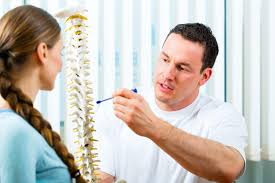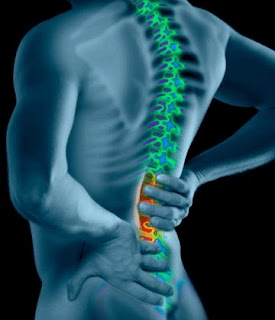The affliction known as peripheral neuropathy is not a single disease. The name is a general term for a series of disorders that result from damage to the body’s peripheral nervous system. Two parts comprise the body’s nervous system - our central nervous system includes the spinal cord and the brain, while the peripheral nervous system connects the nerves running from the brain and spinal cord to the rest of the body.
When nerves are damaged or destroyed and can not send messages from the brain and spinal cord to the muscles, skin and other parts of the body then peripheral neuropathy occurs. When this damage happens numbness and pain in the arms, hands, legs, and feet may occur. Multiple nerves (polyneuropathy) can be affected or peripheral neuropathy can attack only one nerve or nerve group (mononeuropathy) at a time. Usually mononeuropathy is the result of damage to a single nerve or nerve group by inflammation, trauma, injury, local compression, or prolonged pressure.
Being an intricate network, our peripheral nerves connect the brain and spinal cord to the muscles, skin, and internal organs. Peripheral nerves coming out of the spinal cord, peripheral nerves are arranged along lines in the body called dermatomes. Damage to a nerve will typically affect one or more dermatomes, which can be tracked to specific areas of the body. The resulting injury to these nerves interrupts communication between the brain and other parts of the body. This damage can impair muscle movement, prevent normal sensation in the arms and legs, and cause pain. As well it can also affect other areas of your body.
Traumatic injuries, infections, metabolic problems, inherited causes and exposure to toxins can all be causes of peripheral neuropathy. Diabetes is one of the most common causes. Be aware that peripheral neuropathy can affect one nerve (mononeuropathy), two or more nerves in different areas (multiple mononeuropathy) or many nerves (polyneuropathy). An example of mononeuropathy is Carpal tunnel syndrome, and most people with peripheral neuropathy have polyneuropathy.
Generally speaking the signs and symptoms of peripheral neuropathy might include localized numbing, a gradual onset of numbness, prickling or tingling in your feet or hands, which can spread upward into your legs and arms. You might also experience a sharp, jabbing, throbbing or burning pain and an extreme sensitivity to touch. Some patients report pain during activities that should not cause pain, such as pain in your feet when putting weight on them or when they are under a blanket. Sometimes there is lack of coordination and falling and muscle weakness. Signs and symptoms if autonomic nerves are affected might include changes in blood pressure, causing dizziness or lightheadedness, bowel, bladder or digestive problems, excessive sweating or not being able to sweat and heat intolerance.
Your physician will review your medical history and conduct a physical exam and neurological evaluation before diagnosing peripheral neuropathy. This neurological evaluation, which consists of a number of simple and painless tests is usually performed to diagnose peripheral neuropathy. You may encounter other tests that can determine what type of peripheral neuropathy you have depending on your symptoms and outcome of the neurological evaluation.
It will be easier for your doctor to understand your condition if you are prepared to discuss your symptoms in detail with them. Most likely your doctor will ask you to describe your symptoms, when you experience them, how long the episodes last and the amount of discomfort or pain you experience. Make your doctor very aware of your condition by being specific about the tingling, numbness, weakness or other symptoms you are experiencing.
Keep in mind that your doctor may also ask you general health questions that may seem unrelated to your symptoms, but are very important. Such questions could be about whether or not you feel faint, nauseated or tired, and your doctor may also ask if your bladder control and sexual function are normal. Usually you will also be asked if you are taking medications or suffering from any other illnesses.
In every case your treatment is based on treating the underlying disorder, for example If diabetes is the cause, making certain that the blood glucose is controlled is important. Correcting the deficiency is the treatment if a vitamin deficiency is causing the problem. It has been discovered that many treatments can bring relief and help you return to your regular activities, and sometimes a combination of treatments works best.
Sometimes medications are the temporary solution as over-the-counter pain medications like acetaminophen (Tylenol) and nonsteroidal anti-inflammatory drugs, such as aspirin and ibuprofen, can be very helpful in controlling moderate pain. These drugs can affect your liver or stomach function if you take them in excess so it is most important to avoid using them for an extended period, especially if you drink alcohol regularly.
To control the pain of this condition many prescription pain medications can also help. In this group are narcotics, antidepressants and some antiepileptic medicines. Your doctor may prescribe other helpful prescription medicines including seizure medications, such as gabapentin or pregabalin, tramadol or corticosteroid injections.
Another treatment that may be right for you can include surgery. You might need surgery to reduce the pressure if you have neuropathies caused by pressure on nerves, such as pressure from tumors. And finally the key for you might include physical therapy. This can help improve your movements if you have muscle weakness. Medical equipment might also be required, aids such as a wheelchair, hand or foot braces, a cane, a walker, or a rollator.
Physical Medicine & Rehabilitation
Medicine. Matt Ota is a Board Certified Physician Assistant with
extensive knowledge of musculoskeletal disorders and injuries.
(located at OFMC Plaza)
2135 SW 19the Avenue Road
Wellness Direct: 352-368-1340
OFMC Main: 352-237-4133
Fax: 352-873-4581
E-mail: info@ocalafmc.com




















































